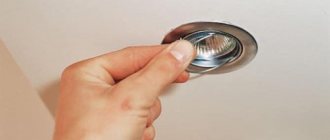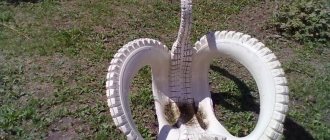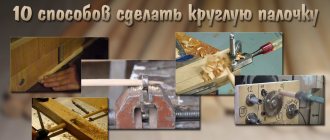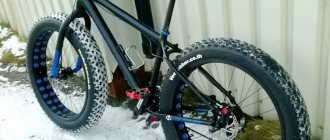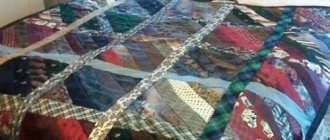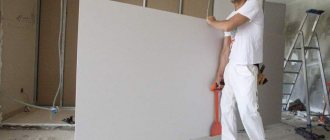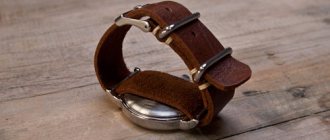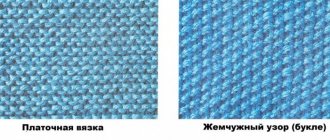Before you start renovating a house, you need to perform a number of dismantling works - tear off old wallpaper, remove doors, open floors and much more. For some reason, customers consider such work simple, not requiring any qualifications, and try to pay for it at a minimum. Breaking is not building. In fact, dismantling often takes a lot of effort and time, requiring work not only with your hands, but also with your head. For example, you have to decide how to unscrew a self-tapping screw with a torn head without damaging the surface. This is not the only problem, but I want to describe several ways to solve it.
Source the-vulgar.ru
Use abrasive powder
As with steel wool, the more grip between the screw head and the screwdriver, the better. You can sprinkle the surface of the screw with a small amount of abrasive scouring powder or fine sand, then apply a screwdriver to the screw and try to remove it. In many cases, powder or sand is enough to keep the bit from slipping off the screw.
Why are the edges of the screw torn off?
There are several negative factors that explain why the head does not unscrew:
- corrosion of the metal, as a result the structure of the material is disrupted, it loses its properties, becomes less durable, crumbles, this leads to the fact that during the repair the technician will not be able to dismantle it by unscrewing the rusty fasteners;
- a screw tends to spin if it has been installed in a structure made of the wrong material.
The problem of how to unscrew a screw arises when the rules for using the tool are violated.
The problem occurs when the rules for using the tool are violated
crosshead screwdriver
Possible causes of fastener damage:
- poor quality of the tool: the metal is too soft, which causes the screwdriver to constantly slip out, the sharp edges have become dull due to wear, this also does not allow the screw to be firmly fixed in the slot, in addition, the tool may be incorrectly selected for such work (does not match the head size);
- weak efforts in the process of unscrewing the fastener, while the screwdriver is not held in the slot, constantly slips, as a result the head is deformed, for this reason it is called “slipped”;
- At the installation stage, the fasteners were installed in a structure made of a material that does not match the screws, because of this it rotates; using a screwdriver it will not be possible to pull out such hardware.
The tool may not be selected correctly for the job.
Screwdriver bit
A common problem with using power tools is the incorrect choice of operating speed. Use moderate force to drill out the fasteners. The operating time of the screwdriver should be short. If you drill a screw intensively, the slot will become deformed. As a result, you will have to additionally decide how to unscrew a screw with a damaged head, which will increase the time it takes to complete the work.
If you drill a screw intensively, the slot will become deformed.
Drill the screw
Select a drill bit that is slightly smaller in diameter than the screw head. Place it in the center of the screw head and drill slowly to create a hole 1 to 3mm deep. Remove the drill from the screwdriver and install the cue ball. Often the hole will help the screwdriver go deep enough into the screw, which will improve the grip between the cue ball and the screw.
Several techniques for removing a screw or self-tapping screw with a torn cross
When choosing a method, the degree of complexity of the task is taken into account. It is necessary to determine how deep the fastener is located in the layer of material. The condition of the surface is assessed: is there any rust, how badly damaged is the screw head. Use auxiliary means: rubber, chisel, hammer. If you plan to use the impact method on the fasteners, you need to prepare a gasket: made of brass, copper. This will avoid the final destruction of the hardware head.
Press down on the screwdriver
The main mistake when unscrewing fasteners is not using enough force. If you ensure a high degree of tight contact between the tool tip and the edges of the slot, you can contribute to the displacement of the screw. However, it is important to know in which direction the product is untwisted.
Hardware is produced with right-hand threads, but less common are screws that are screwed in the other direction - counterclockwise. If you put a lot of effort into unscrewing the fastener, you can screw it even more tightly into the layer of material in this way. When it becomes clear that the product cannot be touched by a screwdriver, you should immediately stop trying to remove it this way.
Press down on the screwdriver while rotating
Regular rubber band and screwdriver
The principle of action of such a tool is similar to how a screwdriver works in the previously discussed case. However, thanks to the rubber seal, the contact area increases. As a result, the chances of fastener removal increase. Instructions:
- It is recommended to use wide rubber, which increases the contact surface area;
- first you need to cover the sharp edge of the screwdriver with an elastic material, it is pulled tightly enough to ensure a tight fit, but there is a risk of deformation of the coating, so you should not be too zealous;
- the tool with the seal is installed in the slot, then they begin to slowly rotate the screwdriver.
The method is suitable for unscrewing a screw that is not too licked, how fasteners are removed - to answer this question, you need to understand the mechanism of action of a screwdriver: it begins to unscrew the fastener when it fits tightly to the edges of the slot, and the rubber partially fills the defects of the head. As a result, the friction between the tool and the hardware increases, which allows the latter to move from its place.
It is recommended to use wide tires
Drill the head
If the fastener protrudes slightly above the surface of the structure, it can be removed using a drill or screwdriver. You don’t have to put a lot of effort into this; the tool will do everything on its own. You only need to open the chuck. The tool is then placed on top of the screw.
When the head is fixed in the chuck, the drill and screwdriver turns on. After a few seconds, the fastening element is removed. The disadvantage of this method is its limited application. In most cases, the head of the hardware is deformed when it is flush with the surface of the structure. It will be impossible to capture her in this case.
Can be removed using a drill or screwdriver
Chisel and hammer
This method will not provide the required result if the fastener is completely recessed. The purpose of using impact tools is to move the screw slightly. This will make the unscrewing process easier. The chisel is installed at an angle relative to the fastener head. The hammer makes 1 blow. You should not repeat these steps many times, as in this case you can destroy the head. This option is suitable for situations where rust has formed on a metal product.
The purpose of using impact tools is to move the screw slightly
Extractor drilling method
This tool for removing threaded fasteners comes in different versions, differing in size. It resembles a drill, but has a conical shape and a thickened base. Before using it, you should prepare the fasteners. A small cross-section hole is made in it. The extractor is selected taking into account the diameter of the recesses of the threaded part of the screw - the tool should be smaller. To unscrew the product, a left-hand thread is cut into the hole. Please note that the screws have right-hand threads.
Drill a hole in the screw head
Screw extractor
Do not hit the extractor too hard
Turn the extractor
When the manipulations are completed, the fastening element is removed. The extractor is used for unscrewing various types of hardware. However, they are not used for self-tapping screws. This is due to the fact that such products are made from hardened steel. In this case, the fastener will move to the side when you try to drill it.
The extractor is used for unscrewing various types of hardware
Fastening element, can be easily removed
Sawing the edge
When the screw head becomes deformed, it is possible to remove such hardware by increasing the size of the slot. However, this increases the risk of fastener failure. As a result, it will be more difficult to remove. To avoid such consequences, it is recommended to make 1 cut - along the center line. Both cross-shaped grooves should not be expanded or increased in length.
Make a cut
To make the cut, it is recommended to use a hacksaw or grinder. The process produces metal shavings. It must be removed periodically to provide visibility for a quality cut. It should not be made more than 2 mm in depth. This will destroy the head. When the groove is ready, use a flathead screwdriver to remove the hardware.
Use a hacksaw for metal
With glue
Various adhesives are used. The purpose of this method is to ensure a high tight fit of the screwdriver. It is glued to the screw head. When the composition is completely dry (this may take 1-2 days), begin to unscrew the fastening element. Recommended types of mixtures: super glue, epoxy glue. The disadvantage of this method is the low degree of reliability. If you apply a little more force than necessary, the connection will break, and you will have to look for a new way to remove the hardware.
Various adhesives are used
Additional method
You can use a welding machine. In this case, the nut is welded to a metal product. The result is a strong connection. It is necessary to unscrew the nut, and the torn fastener will be removed along with it. This method also has limitations in use. Thus, it should not be used if it is necessary to remove a screw from flammable materials. In addition, the contact point is small, which will make the process difficult.
Weld the nut
A strong connection is created
Unscrew the nut
Use elastic bands to grip
Wide rubber bands work well to ensure that the screwdriver has enough grip on the stripped screw. Cut the rubber band with scissors and place it on the head of the screw. Place the screwdriver on the rubber band and press firmly while turning the screw counterclockwise.
Follow us on Pinterest for more interesting articles.
Useful short videos from Make-Self.net
Where to begin
Assess the degree of complexity of the problem: if the stripped screw is recessed into the structure of the material, complex methods are considered; To remove the fastener at the screwing stage, use pliers - they grab the head and unscrew it.
Before starting the product removal procedure, check that the screwdriver is selected correctly. To do this, check all types of tools. If the screwdriver is initially selected incorrectly, then you will not need to perform complex procedures for removing the fasteners. The problem will be solved by replacing the tool.
Precautionary measures
When choosing a way to unscrew a screw with torn edges, you must follow the recommendations:
- when using an auxiliary tool, you should control the intensity of the applied forces: sometimes, in order to remove the fastener faster, you have to press harder on it, but the situation will worsen in this case and, conversely, too careful actions with weak pressure will lead to even faster erasure of the edges of the slot;
- when the fastener is unscrewed too intensively or an auxiliary tool is used, during work with which metal shavings are formed (a hacksaw, etc.), it is necessary to periodically remove them, since the presence of foreign particles causes the tool to not fit tightly enough to the edges of the slot, what will slow down the work;
- It is recommended to wear safety glasses when removing a screw without a head, since during the procedure, metal shavings may form when using a power tool;
- you need to know which way to unscrew the screw, so, in most cases, hardware is made with a right-hand thread, which makes it possible to install the fastener by screwing it clockwise, and it is removed, on the contrary, when the screwdriver moves in the opposite direction.
When using an auxiliary tool, the intensity of the applied effort should be controlled
Rusty screw
Before tackling the question of how to unscrew a self-tapping screw that is susceptible to corrosion, you should consider all available methods:
- a blow to the fastener, in this case the integrity of the rust shell is violated, thanks to the vibration created by this, it will be easier to unscrew the rusted screw;
- use of an impact tool: the resulting effect is the same as in the first case; a manual or mechanical impact screwdriver is suitable;
- If the question is how to unscrew a broken screw, which, when trying to remove it, scrolls, and is also covered with rust, you should use the heating method, in which case the metal expands; after cooling, the product will shrink to its original size, as a result, the integrity of the rust shell is damaged, which allows you to quickly remove fasteners;
- an alternative method is the use of the chemical WD-40, a rust converter is used, which destroys the formed shell, however, a positive result can only be obtained if the entire surface of the screw is treated, this condition is often difficult to fulfill.
If corrosion occurs, all available methods should be considered.
Placing rubber
If the head remains on the screw, but the slot is torn off, you can use a rubber gasket. To do this, a small square of rubber is placed on the surface of the fastener, which will act as a layer between the screw and the tool, preventing the latter from spinning.
Almost any dense rubber is suitable for this method, for example, a medical tourniquet or a bicycle inner tube. It is important that the rubber gasket is strong so as not to tear, but at the same time thin enough so as not to lose grip. If the rubber breaks or is otherwise damaged during operation, simply take a new piece.
Unscrewing a broken bolt if a piece protrudes from the product
In this case, there are also several ways. Two of them have already been considered. This is done using a chisel and a hammer, only the working part of the chisel is placed on the body of the bolt. And using a hacksaw or a grinder with a thin disk, a cut is made and unscrewed with an ordinary screwdriver.
There is another method using welding. Using it, you can unscrew not only broken bolts, but also studs.
We put a nut on the rod (the diameter of the inner hole of the nut is slightly larger than the hardware rod) and electric weld it to the bolt. Let's wait until it cools down, then use a wrench to unscrew the bolt. It is necessary to place insulating material (paper) under the nut so that the arc does not slip through and damage the attached part.
Welding instead of glue
Welding can be used in the same way. The advantage of this method is that welding (even cold), unlike glue, provides a much better grip of the tool and the screw. This is especially important if the self-tapping screw is deeply embedded and is not going to come out at all. However, it should be understood that when using welding, the drill bit or screwdriver will be damaged.
Unscrewing a broken bolt if the fragment does not protrude above the surface of the product
There are a lot of ways to unscrew, some of them have already been considered:
- using a left-hand drill:
- using an extractor;
- using a drill and tap.
They are suitable for all types of fasteners. There are several other ways to remove bolts, screws and studs that have broken off at or below the surface of the product:
- a bolt broke off in a duralumin product, for example, in a cylinder head. In this case, the remaining hardware can be removed using nitric acid.
We pour it into the hole where the fragment is located and wait until the steel of the fastening element corrodes. Then it is necessary to neutralize the remaining acid with alkali and rinse the hole.Important!
When working with acid, use special protective equipment and follow safety precautions
; - there is a safer way. We drill a hole in the body of the broken bolt, hammer a triangular file or a tap sharpened into a triangular pyramid into it, and unscrew it using a wrench.
Fastening elements often become covered with rust over the course of their use, which makes it difficult to carry out further actions with them.
In these cases, it is recommended to moisten the fasteners with a special liquid to make it easier to unscrew bolts, nuts, etc.
It is designated WD-40, is relatively inexpensive and is sold in all automotive spare parts stores.
Method two
If you need to unscrew deep-seated hardware, you simply will not be able to grab it due to the lack of a protruding part. You will have to damage the surface. Of course, you will have to fix the damaged area later, but this is the only option.
If the surface is wood, try using a chisel. If it is concrete, you can either make cuts using a grinder, or lightly process the desired area of the surface with a drill. Then, using pliers or pliers, you can pull out the hardware.
If you have to work with a metal screw, you will have to drill holes around it in order to then remove it with duckbills.
